
In this week’s Claire Chats, I talk about the famous Elizabeth I Armada Portrait and the campaign to save the Tyrwhitt-Drake version of it.
[Read More...]
In this week’s Claire Chats, I talk about the famous Elizabeth I Armada Portrait and the campaign to save the Tyrwhitt-Drake version of it.
[Read More...]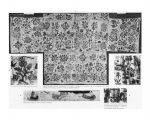
Claire talks about the Bacton Altar Cloth, a piece of fabric thought to have been cut from a gown belonging to Elizabeth I and presented to the church by Blanche Parry.
[Read More...]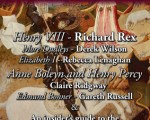
Packed with a wide range of articles about Tudor personalities like the Dudleys, Elizabeth of York, Mary I, Isabella of Spain and Henry Howard. There is part one of an insider’s guide to the Tower of London, a detailed article about Greenwich Palace and Wroxhall Abbey, an article about some bizarre Tudor foods and lots more! It’s our best magazine yet!
[Read More...]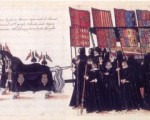
“It is not my desire to live or to reign longer than my life and my reign shall be for your good,” said Elizabeth to her parliament in 1601. Upon one of the many times parliament questioned Elizabeth about her plan of succession, she stated, “I know I am but mortal and so therewhilst prepare myself for death, whensoever it shall please God to send it.” And send it, God eventually did.
24 March, 1603. Elizabeth I, the Virgin Queen, England’s Gloriana and daughter of the great Henry VIII by the ill-fated Anne Boleyn, passed away peacefully in her sleep at Richmond Palace. She was 69 years old and had reigned for almost 45 years.
[Read More...]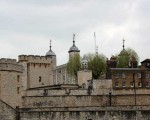
On Palm Sunday 1554 (which was 18 March that year), the twenty year old Elizabeth was taken to the Tower of London, the place where her mother had been imprisoned and where her mother and one of her stepmothers had been executed.
We can only imagine the sheer terror she felt when Mary I’s council turned up at her doorstep on the 16th March to formally charge her with being involved in Wyatt’s Rebellion, the revolt which had taken place in January and February 1554. Elizabeth was told that Mary wanted her sister taken to the Tower for questioning and that she would be escorted there the next day.
[Read More...]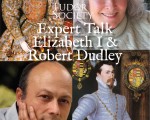
This month’s expert speakers (two!) are Robin Maxwell and Christopher Gortner, who I interviewed about relationship between Elizabeth I and Robert Dudley. These two amazing historians and authors have quite different views about this fascinating relationship, and their knowledge is really worth sharing.
[Read More...]
Just to let you know that this programme is on at 9pm on Wednesday (10th February) on the UK’s BBC Four channel. Here’s the blurb:
“Vanessa Collingridge examines the life of Elizabeth Tudor, with particular interest in how documentary television and the BBC has examined her legacy….”
[Read More...]
If you’re in the UK or have access to the UK’s BBC2 then make sure that you catch this programme on BBC2 today (1st February 2016) at 9pm. Here’s the blurb from the BBC:
[Read More...]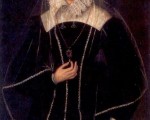
On this day in history, 1st February 1587, Elizabeth I called her secretary, William Davison, to her and asked him to bring her Mary, Queen of Scots’s death warrant. She then signed it.
Mary, Queen of Scots, had been tried in October 1586 for her involvement in the Babington Plot, a plot to assassinate Queen Elizabeth I. As the trial closed, Mary demanded that she should be heard in front of Parliament or the Queen, but she was fighting a losing battle. Sentence was delayed as long as possible, by order of Elizabeth, but on 25th October the commission reconvened and found Mary guilty. On 29th October, Parliament met to discuss Mary, the Babington Plot and her role in Lord Darnley’s murder, and it was decided that they should petition Elizabeth to execute Mary. This put Elizabeth in a difficult position as she did not want to be accused of regicide. On the 4th December, Mary was publicly proclaimed guilty.
[Read More...]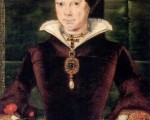
ary I became queen in 1553 and although the English people had been happy for her to become queen, some noblemen became worried about her plans to marry Philip II of Spain and the religious changes her reign was bringing. A group of men including Thomas Wyatt the Younger, Henry Grey (Duke of Suffolk and father of Lady Jane Grey), Sir Peter Carew, Sir Edward Rogers, Sir Edward Warner, Sir William Pickering, Sir Nicholas Throckmorton, Sir James Croft, Sir George Harper, Nicholas Arnold, William Thomas and William Winter decided that a military coup might be the only way to prevent Mary’s marriage and planned a series of uprisings with the aim of deposing Mary I and replacing her with her half-sister Elizabeth, who would marry Edward Courtenay, Earl of Devon.
[Read More...]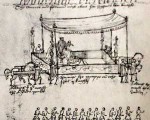
On 14th January 1559, the eve of her coronation, Queen Elizabeth I processed from the Tower of London to Westminster in a cloth of gold covered litter carried by two mules.
Here are the main parts and pageants of the procession from Fenchurch onwards:
[Read More...]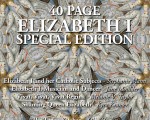
With a giant 40 page special section, and over 80 pages in total, it’s only when you put together a magazine featuring Elizabeth I that you realize how many portraits of the queen there are, how many different “personalities” she showed, how clever a ruler she was, and how long her reign was
[Read More...]
Christmas Eve, 1601. The setting: a sleepy, south-eastern port town in Ireland. The Nine Years War of Ireland had been raging since 1594, with the English fighting to have control of Ireland under Elizabeth I of England. The unorganized Irish had won several battles and skirmishes against the English, frequently through the use of ambush. But in 1601, trained Spanish troops arrived, giving great hope to the Irish.
Ireland was a Catholic country and Catholic Spain had recently suffered the humiliating defeat of their Armada by Elizabeth I in 1588. The Spanish, led by Don Juan del Áquila, arrived at Kinsale in September of 1601, with Kinsale being the poorest choice to undergo a siege, as it was situated in a hollow and did not have strong walls. The Spanish were forced to land at Kinsale due to poor weather. The English experienced some relief when they learned that the Spanish fleet was headed for Ireland and not England.
[Read More...]
As this week has been the anniversary of Elizabeth I’s accession to the throne on 17th November 1558, I thought it was appropriate to test your knowledge of this queen’s early years – good luck!
[Read More...]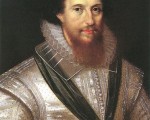
Robert Devereux, 2nd Earl of Essex, was born on this day in history, 10th November 1565, at Netherwood, Herefordshire. Devereux was the eldest son of Walter Devereux, 1st Earl of Essex, and Lettice Knollys, granddaughter of Mary Boleyn, and was a favourite of Elizabeth I. After his father’s death in 1576, William Cecil, Lord Burghley, was made his guardian, and in 1578 his mother married his godfather, Robert Dudley, Earl of Leicester.
Essex first caught the Queen’s attention in 1584 when his stepfather, Leicester, brought him to court, and he was appointed Master of the Horse on his return to court after successful military service in the Netherlands with his stepfather. He was just twenty-one, and the Queen was fifty-three.
[Read More...]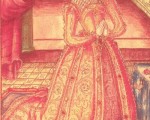
On 10th October 1562, twenty-nine year-old Queen Elizabeth I was taken ill at Hampton Court Palace, with what was thought to be a bad cold. However, the cold developed into a violent fever, and it became clear that the young queen actually had smallpox. Just seven days later, it was feared that the Queen would die.
[Read More...]
Gloriana, Elizabeth I, is the famous Virgin Queen of England. She never took a husband. Much speculation has swirled around Elizabeth’s decision to remain single. Several tragic, if not traumatic, events are cited as reasons why Elizabeth chose not to marry.
Elizabeth was born on 7 September 1533. On 19 May 1536, when Elizabeth was not quite three years of age, her mother, Anne Boleyn, was beheaded by order of her father. Elizabeth, a precocious child, asked following the fall of her mother, “how haps it governor, yesterday my Lady Princess, today but my Lady Elizabeth?”. Elizabeth’s first step-mother, Jane Seymour, died of puerperal fever in 1537 only days after giving birth to Elizabeth’s little half-brother. Elizabeth was four years old. Katherine Howard, a cousin of Elizabeth’s on her mother’s side and Elizabeth’s third step-mother, was beheaded for high treason for her “dissolute life previous to her marriage” in February 1542. Elizabeth was eight years old.
[Read More...]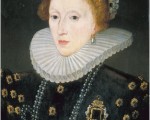
Today is the 482nd anniversary of Elizabeth I’s birth on 7th September 1533, so Happy Birthday Elizabeth!
Elizabeth was the daughter of Henry VIII and his second wife, Anne Boleyn, and she was born at the Palace of Placentia, or Greenwich Palace.
[Read More...]
As part of Gareth Russell’s book tour for “A History of the English Monarchy: From Boadicea to Elizabeth I”, I’m delighted to welcome Gareth to the Tudor Society today, which is his home from home anyway! I hope you enjoy his article and please see the bottom of this post for details on how to enter the giveaway for a copy of his wonderful book. Over to Gareth…
Elizabeth I’s decline began in her moment of apotheosis. The defeat of the Spanish Armada coincided with the death of Robert Dudley, Earl of Leicester. In the middle of the victory celebrations, the Queen received the news that her childhood friend-turned-adult-love had passed away and she was heartbroken. It has long been surmised that Elizabeth would have married Leicester had he not already been married and his first wife, Amy Dudley (née Robsart), had not then been found dead in circumstances that looked suspiciously like murder or suicide. However, during a bout of serious illness when she thought she was about to die, Elizabeth made a point of denying that she had ever taken Leicester into her bed, no matter how much she loved him. Despite mountains of speculation then and since, there is in fact no firm evidence at all to suggest that Elizabeth I was not a virgin as she claimed. The risk of pregnancy, the loss of her reputation, death in childbed or yielding her authority to a man made celibacy by far her safest choice. We will never know, of course, what happened every day and night of her life, but it is worth pointing out that it should not be taken as axiomatic, as it too often is, that Elizabeth Tudor lied about her life-long virginity.
[Read More...]
On the 9th August 1588, Elizabeth I appeared before the troops that had gathered at Tilbury Fort in anticipation of a Spanish attack.
In her article “The Myth of Elizabeth at Tilbury”, Susan Frye, writes that there are no reliable eye-witness accounts regarding Elizabeth I’s appearance on that day, but that tradition places the Queen in armour, giving a rousing speech – an iconic Gloriana.
[Read More...]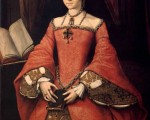
On 31st July 1548, the fourteen year-old Elizabeth, future Elizabeth I, wrote to her stepmother Catherine Parr, the Dowager Queen. The letter was written just before the pregnant Catherine took to her chamber, and just weeks before Catherine died of puerperal (childbed) fever. Elizabeth wrote:
[Read More...]
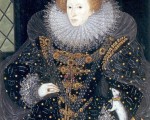
I’ve had an email from the Cambridge University Institute of Continuing Education about an online course they’re running in 2016 on Elizabeth I. It looks really good so I just had to share the details.
[Read More...]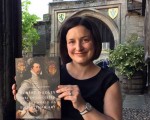
Here’s the transcript from our live-chat session with Elizabeth Goldring. Well done to Ceri for winning a copy of Elizabeth’s beautiful Robert Dudley book.
[Read More...]
From the 9th to the 27th July 1575 Elizabeth I stayed at Kenilworth Castle in Warwickshire, home of her great friend Robert Dudley, Earl of Leicester. She had visited Kenilworth three times before but this was a special visit in that it lasted nineteen days and was the longest stay at a courtier’s house in any of her royal progresses.
We know a substantial amount about Elizabeth’s visit to Kenilworth because it was recorded in a letter by Robert Langham, a member of Dudley’s household, and in an account by poet and actor George Gascoigne, a man hired by Robert Dudley to provide entertainment during the royal visit.
[Read More...]
Lacey Baldwin Smith has written that “Tudor portraits bear about as much resemblance to their subjects as elephants to prunes.” A slight exaggeration, maybe. But it is true that the historical accuracy of the depictions in Tudor portraits, particularly of royalty, was often at war with “symbolic iconizing”—the use of imagery to represent the person’s character, position or role.
The symbolism could include inscriptions, emblems, mottos, relationships with other people, animals, or objects, and it could also be written into the body itself. A famous example is Hans Holbein’s sketch of Henry VIII—the painting itself was destroyed in a fire—with the king posed to emphasize his power, authority, and resoluteness: legs spread and firmly planted, broad shoulders, one hand on his dagger, and a very visible codpiece (larger, art historians have noted, than portraits of other men at the time.) His stance, as Suzanne Lipscomb points out, “mimics the stance of a man standing in full armour…sparking associations with martial glory.” Lipscomb also points out an interesting detail: in the draft sketch, Henry’s face is turned to a ¾ angle. But in the final painting, as we know from 16th century copies done within Henry’s lifetime, Holbein has Henry looking straight ahead, confronting the spectator with an unblinking stare that is still symbolic of masculinity today.
[Read More...]
Elizabeth I was born on 7 September 1533 at Greenwich Palace. She was the daughter of Henry VIII and his second wife Anne Boleyn. Her mother was executed for alleged adultery and treason in May 1536 and within two months of her mother’s death Parliament had confirmed that Elizabeth’s parents’ marriage was invalid and that Elizabeth was illegitimate.
In 1547, following her father’s death, Elizabeth moved in with her stepmother the Dowager Queen Catherine Parr, and her husband Thomas Seymour. There, she became involved in a scandal with Seymour, who would visit Elizabeth’s chamber, dressed only in his night-gown, and proceed to tickle and stroke the teenaged girl. Eventually, Catherine arranged for Elizabeth to go and live with her good friends, Sir Anthony Denny and his wife at Cheshunt. Catherine died in September 1548, following the birth of her daughter, and Seymour was executed in March 1549 for allegedly plotting to control his nephew Edward VI and to remove his brother, Edward Seymour, Lord Protector, from power.
[Read More...]
Just to let those of you with access to the UK’s BBC 2 know that Dan Snow’s three part series “Armada – 12 Days to Save England” starts this Sunday (24 May) at 9pm.
[Read More...]
On this day in history, 19th May 1554, the 18th anniversary of her mother Anne Boleyn’s execution at the Tower of London, the future Elizabeth was released from her prison in the Tower of London and placed under house arrest.
Nobody knows what was going through Elizabeth’s mind as she left the Tower on the anniversary of her mother’s execution, but being released from the Tower was not a relief for the young woman as she feared that she was going to be assassinated on her way to Woodstock, where she was going to be placed under house arrest.
[Read More...]